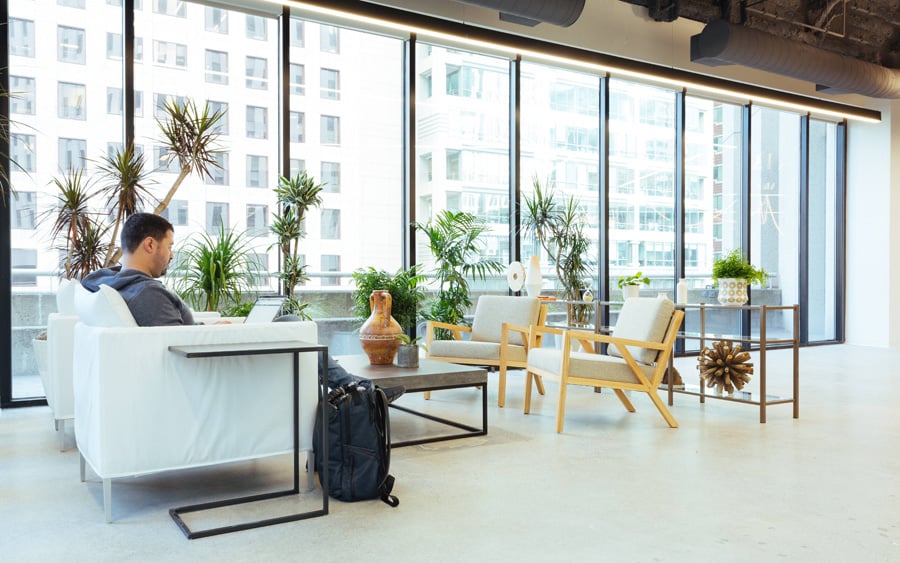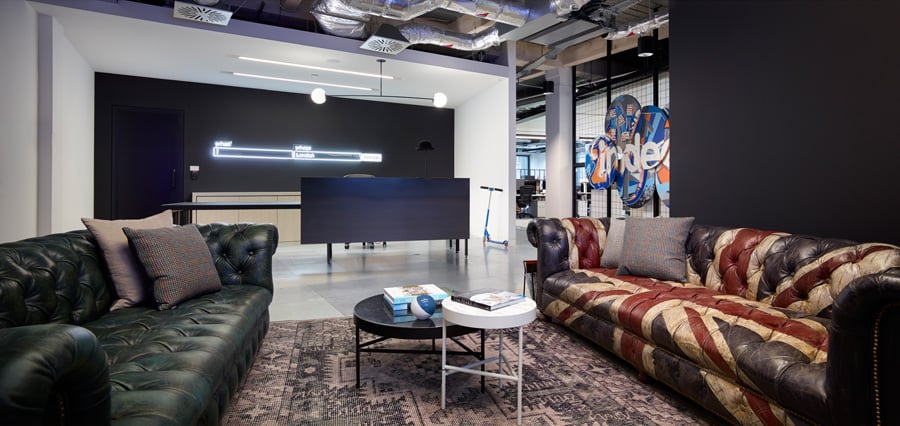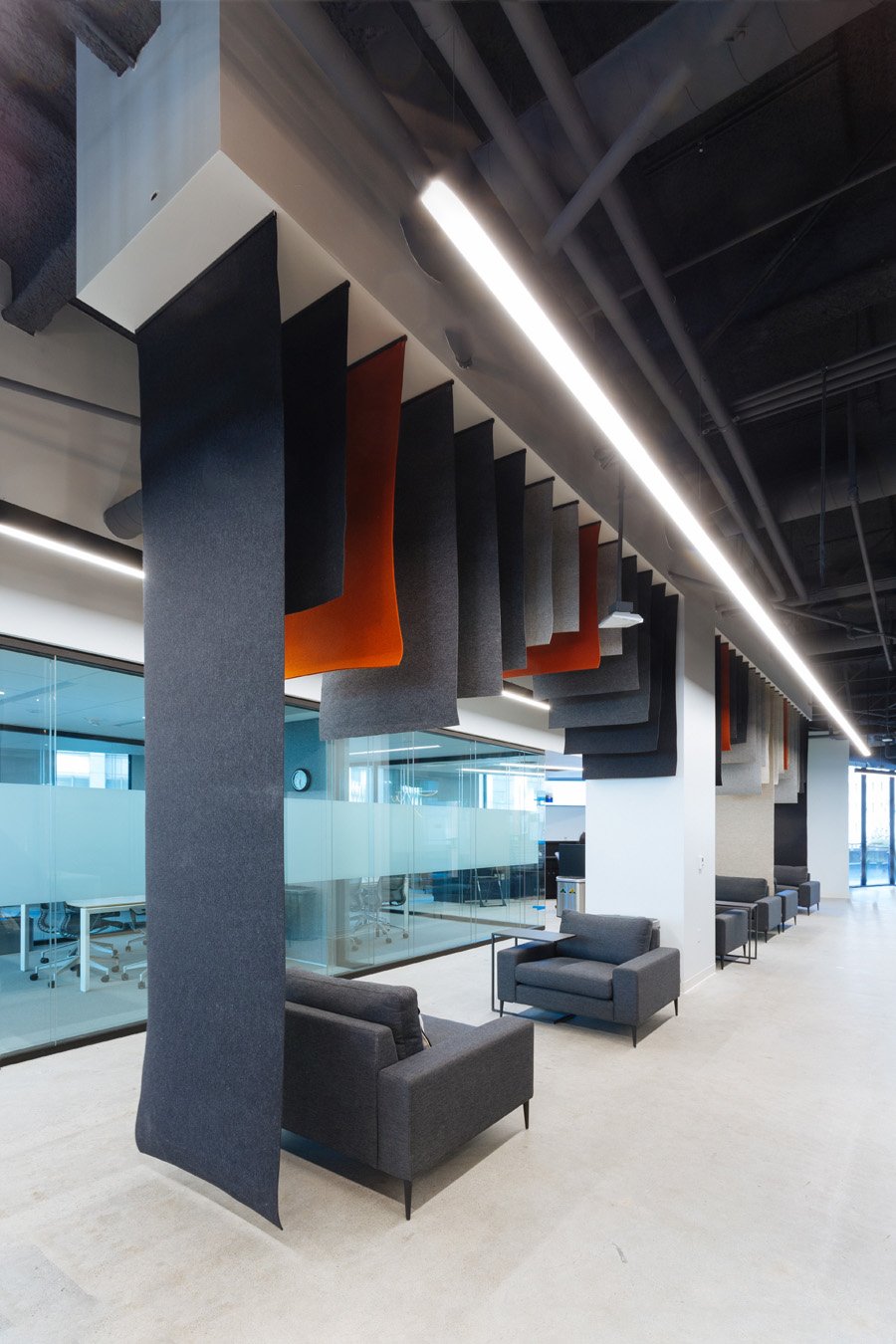
May 3, 2018
Perkins+Will’s Director of Interior Design on Creating Agile Workplaces
Design veteran Brent Capron sits down with Metropolis to discuss workplace trends, the firm’s in-house research, and the significance of NeoCon.

As Perkins+Will’s New York director of interior design, Brent Capron leads creative processes behind the firm’s workplace projects and cultivates client relationships across the Northeast. The Colorado native has over 20 years of design experience in corporate interiors on both the East and the West Coasts, including an award-winning design for Westfield North America’s Los Angeles headquarters. Metropolis editor-in-chief Avinash Rajagopal sat down with Capron to discuss the social roots of workplace design, the importance of studying the client and breaking down boundaries between siloed practices, and NeoCon’s long-standing cultural role.
Avinash Rajagopal: You’ve had a long career in interior design. Looking back at that, how has the American workplace changed?
Brent Capron: Well, in the last two decades we’ve seen the American workforce go into much more of an open work plan. There’s also been an increase in agility. We’re seeing the flexible nature of corporations and businesses in the workplace, and how the workspace is responding to that. And increasingly, companies are addressing diversity in the workspace. Not only is the workforce becoming more diverse, but how people work within a business is becoming much more diverse.
AR: Perkins+Will has a health research lab. That in itself is something new and extraordinary in the industry. How do you use that research in your work?
BC: For example, we’re doing work on resiliency. I’m getting to work with those teams and understanding the priorities of resilient design, the effects a culture might have on a project, or extreme conditions you may not be considering during the course of business as usual—understanding what extreme conditions there could be, and ways you can adapt your design. Another example is more scientific: the effects of light on productivity and emotion within the space—work that Eve Edelstein, in our office, has been doing as an independent researcher. Understanding its effect, you can better work with lighting designers to come up with solutions that have an empirical impact.
AR: Aside from research, what are some big movements in design elements?
BC: Going back to agility, now that business is in the cloud, designers can focus on the social aspects of a space. We’re seeing that linear, rigid quality dissipate. We’re finding softer solutions. You don’t have to be at a proper desk anymore. You can have a more residential- or hospitality- feeling area for doing work. There are new elements being brought into the work- place that are not necessarily just for fun or breakout. They’re still about work, community, communicating with one another. They’re just finding new ways to do that.

Also, we’ve been becoming more flexible, more transparent, more open, for so long. Are we now going to see a little bit of questioning? Can we explore private space? Can we explore enclosed space? Because, are all organizations completely transparent? Do they all need that open flexibility?
We’re now incorporating every aspect of health and wellness, social culture, social responsibility, entertainment, and fun. Our daily life is not as compartmentalized as it once was. Your workday starts from the moment you wake up and check your email at your bedside to the time you make a phone call right before you go to bed. How are we, as a design community, taking different aspects of—and dissolving these siloed walls between—what used to be hospitality design, health-care design, and workplace design?
AR: Given these changes, what does it take to make a successful workplace?
BC: You really need to focus on the DNA of the business that you’re designing for. The number one thing is to listen. The more access you get to the thought leadership of an organization, the more meaningful your design is going to be. It can be as simple as studying your client. You can observe them and issue surveys that let the larger organization—not just the thought leaders— talk about what their needs and concerns are. It’s important to make sure you’re listening and seeing who and what they are, so that you’re able to address those issues throughout the design.
AR: With NeoCon approaching, I’m curious to hear about your experiences there. How has it influenced your work?
BC: What’s always been important for me about Chicago is that once a year, we come together and decide that we’re going to celebrate the renewal of the industry. It’s the best time of year to reconnect as an industry. You’re reestablishing social bonds among thought leaders in your field from across the country, coming to one place at one time, and understanding what American design is for corporate interiors.
AR: What, if anything, would you like to see happen at an event like NeoCon? What do we need to keep things moving forward?
BC: Well, we, not only as an industry but I think as an American culture, need to find a way to constantly keep design at the forefront. NeoCon is a business-to- business fair. However, I think that it’s also a benchmark for American design. If we understand the importance of that— and we make sure to keep the level of intellectual thought high—I think that’s what we need to continue to move forward.
You might also like, “Acoustic Lighting Is Fast Becoming the Cornerstone of a Happy and Healthy Workplace.”
Recent Viewpoints
Viewpoints
Navigating the Path to Net Zero


















